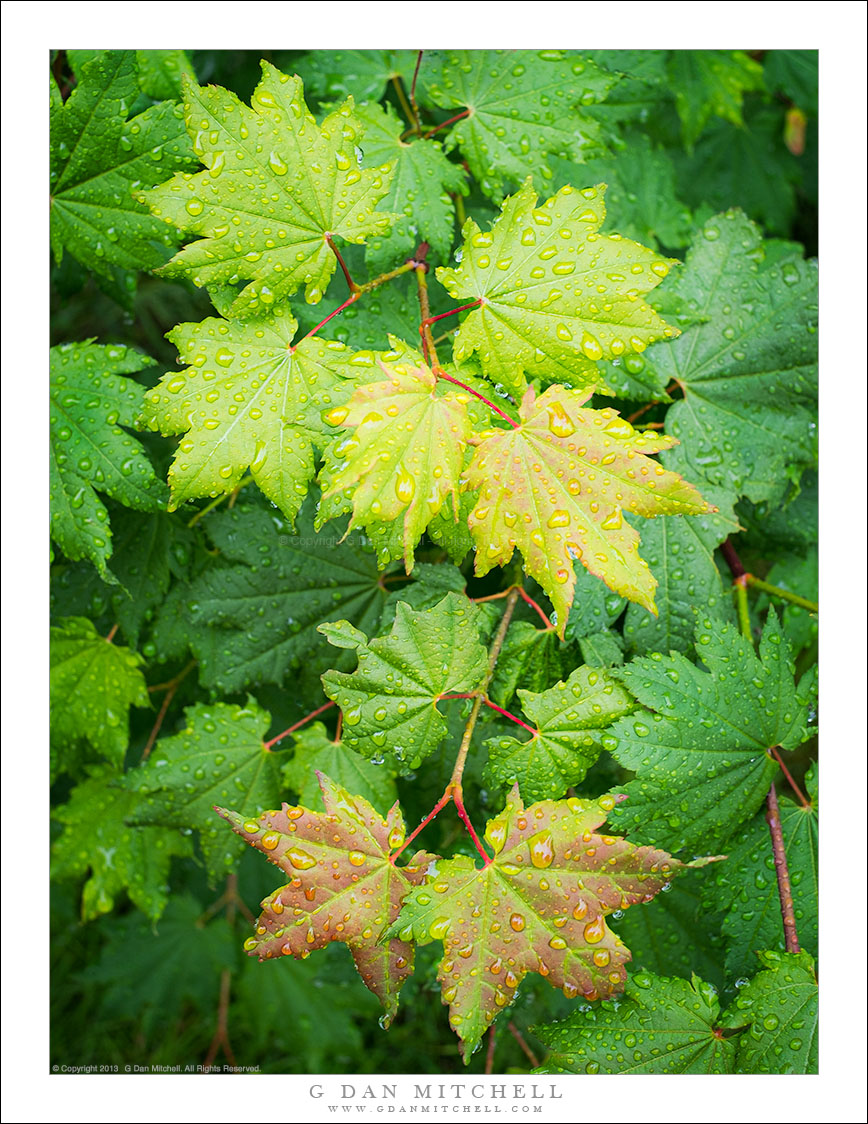
Leaves in Rain. © Copyright 2013 G Dan Mitchell – all rights reserved.
Leaves in rain, Portland, Oregon.
Californians have been dealing with strange weather patterns for more than a decade now — a five-year drought, a few years of way above average rainfall, and then the current season that has been almost completely rainless up until now. As I write this the pendulum is apparently about the swing the other direction, and the forecasts for my part of the state predict an “atmospheric river” storm later this week that has the potential to bring absurd amounts of rain over the course of a few days. It seems to be feast or famine, though the amount of recent rain famine has been the biggest concern.
While this photograph is evocative of the weather we’re about to have, it comes from a naturally wetter place a few hundred miles to the north, namely Portland, Oregon. On a spring visit a few years back we ended up in one of that cities urban parks on a cloudy and wet day, and as we wandered though gardens I stopped to photograph these leaves.
G Dan Mitchell is a California photographer and visual opportunist. His book, “California’s Fall Color: A Photographer’s Guide to Autumn in the Sierra” is available from Heyday Books, Amazon, and directly from G Dan Mitchell.
Blog | About | Flickr | Facebook | Email
Links to Articles, Sales and Licensing, my Sierra Nevada Fall Color book, Contact Information.
Scroll down to leave a comment or question.
All media © Copyright G Dan Mitchell and others as indicated. Any use requires advance permission from G Dan Mitchell.


